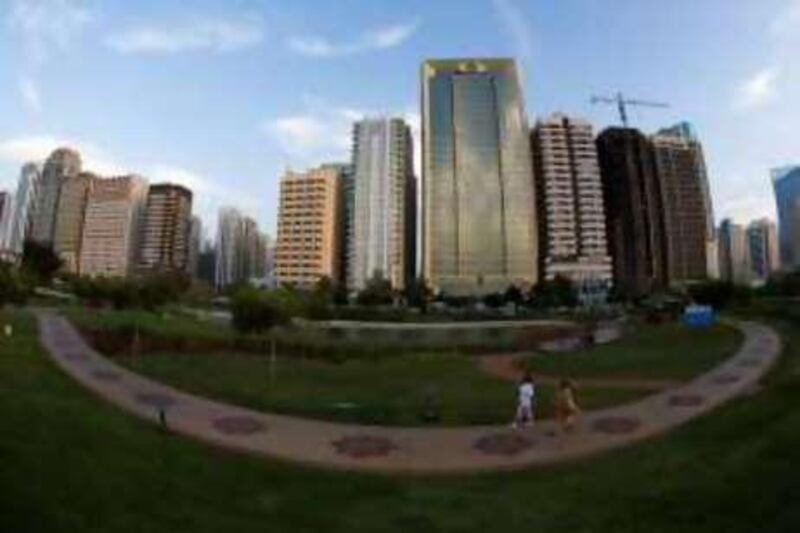If more people are destined to live in towering high-rise apartments, greater importance must be placed on the spaces in between, architects say. Families living in blocks of flats rather than villas or townhouses have limited access to outdoor space, so the alleyways, parks, squares, patios and pavements that surround them - what planners refer to as the public realm - take on a more significant role that should help to create a sense of community. George Katodrytis, associate professor of architecture at the American University of Sharjah, says too much emphasis has been placed on what buildings look like, on their façades. As a result, the public realm has been neglected. The effect this has on a city, he says, is that people are able only to live in the city, not to truly inhabit it. Streets and pavements become a means to an end, never destinations in themselves. "You need to be able to experience casual activity in a public landscape," he says. "If planners don't? see the city as a dynamic field of interaction, the city won't work entirely as a social space." Comparing rapidly expanding cities such as Abu Dhabi and Dubai with established places such as Paris may not be fair, but vibrant streets like the Champs-Elysées are destinations for pedestrians, not just for shoppers. The street's wide pavements, the old trees that line it, the numerous benches, cafes with patios and shops amount to it being more than a way to move through the city. The Champs-Elysées has become a place - not just a street - where people want to be. Mr Katodrytis says the UAE needs to do more to create urban spaces like that. Richard Wagner, an architect with Dubai-based DXB-Lab and vice president of the Architectural Association of the UAE, says all hope should not be lost. Both Abu Dhabi and Dubai are still early enough in their modernisation to develop vibrant public realms. "As a pedestrian, you can only move so far. Once distances become too great you require other means of transportation," he says. "One solution would be to give the city a chance to grow on a pedestrian scale." The way to accomplish that was to employ infill programmes - a means of reinvigorating underused urban space, usually by creating small businesses and outdoor recreation centres and rehabilitating historic buildings for new uses. Such change, Mr Wagner says, must come from the authorities and large-scale developers. How pedestrians interact with the urban landscape is predictable. People will naturally seek a short cut when walking. That happens organically, though the built environment has to be conducive to it. "There needs to be an understanding that even though rigid planning may seem to be the key ?. It can easily backfire and kill the basic idea of a city by being too limiting." Mr Katodrytis says that while the authorities have a responsibility to direct development, architects are largely to blame for seeing their projects in a vacuum. "There is a tendency among architects to see their buildings as a self-preferential expression of themselves, without a wider context," he says. "There needs to be a collective awareness that makes the city relate to what happens on the ground. Many of Dubai's skyscrapers relate more to the sky than to the street." Jean Philippe Coulaud, a spokesman for the Abu Dhabi Urban Planning Council, says that under the Abu Dhabi Plan 2030, communal space is given as much priority as individual buildings, with additional park space and gardens included in the plans. Mr Katodrytis says part of the trouble with top-down creation of communal space is that it does not allow for the organic evolution of an area to meet the needs of the people who use it. He says the alleys behind Dubai's gold souq are the city's most successful area. "It's not beautiful; it's dirty, unpredictable, messy, but it's interesting," he says. "The area has been allowed the time to change with the spontaneous will of the people. It feels like a real culture. When you're there, you feel like you are participating in real public space." jhume@thenational.ae
Cities need to leave space for residents
Architects stress importance of leaving space between buildings for city residents to use as communal areas.

Editor's picks
More from the national





